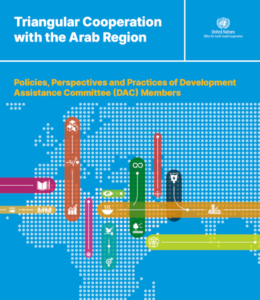As a cooperation modality, triangular cooperation offers tools for bridging entrenched North-South divisions and identifies opportunities for synergies among partners with very different development profiles.
At a meeting organised at the United Nations (UN) in New York City, Dr Sebastian Haug presented a study on triangular cooperation that had been commissioned by the UN Office for South-South Cooperation (UNOSSC). The event brought together more than 130 representatives from UN member states, UN bodies, the Organisation for Economic Cooperation and Development (OECD) and the Islamic Development Bank (IsDB).
Through findings and recommendations from the study “Triangular cooperation with the Arab region: policies, practices and perspectives of Development Assistance Committee (DAC) members”, Haug provided evidence on the heterogeneity of DAC approaches on triangular cooperation. The study contains a global mapping of DAC members’ engagement, including policy frameworks and project portfolios. It also zooms into DAC members’ triangular cooperation with Arab states and shows how projects and partnerships face a number of challenges in strengthening networks to deliver on political and development-related results. The study is part of a growing set of IDOS publications that focus on South-South and triangular cooperation (funding) at the UN and the G20 on the one hand and analyse how China and Brazil as well as African partners engage with international cooperation beyond North-South flows on the other hand.

